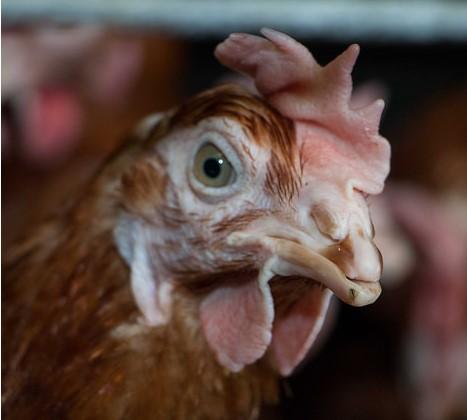Editor's Note: On Mar 23, 2018, the OIE declared that this outbreak was caused by a low-pathogenic, not highly pathogen, H9N2 virus.
Ghana's agriculture ministry yesterday reported a highly pathogenic H9N2 avian flu outbreak in poultry, an unprecedented and potentially concerning development, given that H9N2 typically circulates in birds as a low-pathogenic strain.
In other avian flu outbreak developments, Cambodia reported another H5N1 outbreak, Saudi Arabia reported a few more H5N8 events, and the United Kingdom reported another detection of the new H5N6 reassortant in a wild bird.
H9N2-affected farm near Ivory Coast border
In Ghana, the H9N2 outbreak struck a commercial layer farm in Brong-Ahafo region in the south of the country on the border with Ivory Coast, according to a notification yesterday from the World Organization for Animal Health (OIE). Tests on samples at the Accra Veterinary Laboratory were on Jan 10 were positive for the virus.
The outbreak began on Jan 3, killing 4,225 of 16,822 susceptible laying hens. The surviving birds were destroyed as part of the response to the event, which included imposing poultry movement controls, enhanced surveillance, as well as disinfection and other steps at the farm.
According to the report, the city of Dormaa where the outbreak occurred borders Ivory Coast, and day-old chicks move from Ivory Coast to Dormaa, while spent layers (those no longer producing at desired levels) move from Dormaa to Ivory Coast. It also said supplies such as corn are sourced from Ivory Coast.
In a post today from ProMED Mail, the online reporting system of the International Society for Infectious Diseases, animal health moderator Cristina Ramirez David, DVM, wrote that it is well known that low-pathogenic H9N2 circulates in Africa, and the OIE report from yesterday would be the first time H9N2 is characterized as a highly pathogenic strain.
"Further laboratory studies may be needed to fully characterize the virus. If it is indeed a highly pathogenic strain as reported, this would be quite alarming for both animal and public health," she wrote. "In addition, also of concern about this report is the fact that the finding was reported to the OIE over one month after the strain was identified as highly pathogenic."
Sporadic H9N2 infections have been reported in humans, many of them from China.
Outbreaks in Cambodia, Saudi Arabia, UK
Elsewhere, outbreaks involving other avian flu strains were detected in other countries, according to separate reports from the OIE.
Cambodia, which has been reporting a small but steady stream of H5N1 outbreaks since the middle of December, reported one more event that occurred in early January.
The virus struck backyard poultry in Kandal province beginning on Jan 5, killing 47 of 62 susceptible birds. On Jan 8, tests on five samples were confirmed as H5N1, and the remaining birds at the location were culled.
In Saudi Arabia, which has reported several H5N8 outbreaks this season, officials reported three more outbreaks that took place in the middle of January, affecting backyard poultry in Ash Sharqiyah province in the east and Riyadh province in the central part of the country.
The outbreaks began between Jan 11 and Jan 22, killing 395 of 945 birds. The remaining poultry were culled to curb the spread of the virus.
Meanwhile, the UK reported one more reassorant H5N6 outbreak involving wild birds. The virus was found in a mute swan found dead on Feb 14 in Oxfordshire in the south central part of the country.
In a related development, the UK's Department for Environment, Food and Rural Affairs (DEFRA) yesterday issued a situation report on recent H5N6 detections in the United Kingdom and low-pathogenic avian flu outbreaks in France.
The agency said the number of H5N6 outbreaks in Britain is up to 12 now, but so far no outbreaks in the country's poultry have been reported. Given that the virus is present in wild birds in a number of sites, the probability that more events will occur remains high, but newly affected areas may change as birds migrate north next month, officials said.
Regarding the recent low-pathogenic virus detections in French poultry, DEFRA said the UK threat remains low, since the low-path viruses haven't been detected in France's wild birds.
See also:
Feb 14 OIE report on H9N2 in Ghana
Feb 15 ProMED Mail post
Feb 13 OIE report on H5N1 in Cambodia
Feb 14 OIE report on H5N8 in Saudi Arabia
Feb 14 OIE report on H5N6 in the United Kingdom
Feb 14 DEFRA report




















